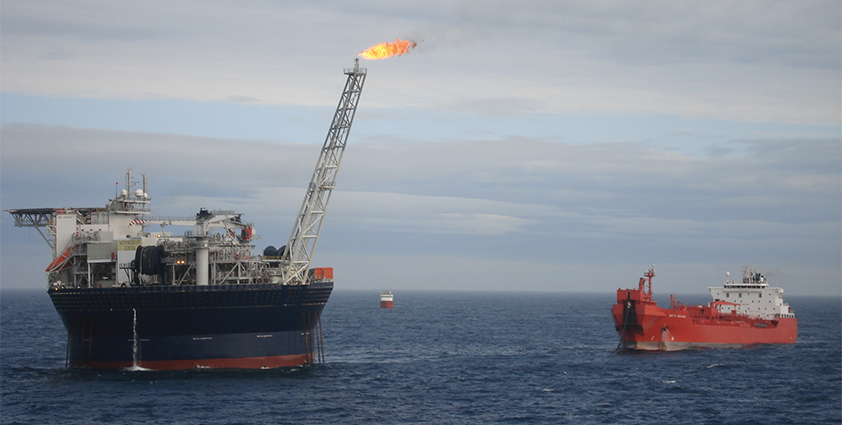
Sevan Marine’s Signature Innovation: The Cylinder Shaped Floater, a Cornerstone of Its Identity
Battling the elements
“The cylinder shaped floater is definitely the product that the company is most identified with,” states Fredrik Major, vice president of business development and research for Sevan Marine. “Everything the company deals with at the moment is based around the application of the cylindrical design we have developed and patented.”
Established in 2001, with a Brazilian subsidiary set up in the same year, Sevan Marine’s primary focus is on the delivery of products and solutions to the offshore industry utilising its skills in the areas of design, engineering and project execution. To date the efforts of the company have been concentrated on providing floating units for production and drilling applications. Sevan’s cylinder shaped floater is most renowned for its suitability for use in all offshore environments and also has apotential for other applications including gas to wire, floating, drilling and production, floating LNG and accommodation.
“Sevan Marine was set up with the aim of covering the whole lifecycle of its products from the original idea and design via the construction and also owning and operating of the vessels,” Fredrik explains. “Initially there was a focus on building floating production, storage and offloading units that incorporated the cylindricalhull design as it made the most sense from a business opportunity view point at the time. Later the company developed a floating drilling unit for ultra-deepwater applications based on the same hull concept. Two of these units have been contracted by Petrobras on longterm contracts for drilling in pre-salt areas in Brasil. The first unit, Sevan Driller, is already in operation while the second, Sevan Driller, is in construction in China.
The Sevan design is the name given to the unique cylindrical features that the company’s offshore installations incorporate. The main features of the design are its circular, symmetrical hull, its high capacity for oil storage and deck loads, the absence of a turret or swivel, its high safety standards and its excellent motion characteristics.
 The design of most FPSO’s incorporates a shape much like that of a ship and as Fredrik highlights, the Sevan design comes with a host of advantages over this traditional look: “The idea of the cylindrical shaped unit is that it will be able to meet all manner of environmental forces head on with the same shape in all directions. Taking away the need to provide the unit with the ability to rotate means eliminating the need to build a complicated turret, which is a component of significant cost, so this gives us a competitive edge. The shape of the steel hull structure means it is quite easy to build and also creates a unit with greater stability that can carry more weight.”
The design of most FPSO’s incorporates a shape much like that of a ship and as Fredrik highlights, the Sevan design comes with a host of advantages over this traditional look: “The idea of the cylindrical shaped unit is that it will be able to meet all manner of environmental forces head on with the same shape in all directions. Taking away the need to provide the unit with the ability to rotate means eliminating the need to build a complicated turret, which is a component of significant cost, so this gives us a competitive edge. The shape of the steel hull structure means it is quite easy to build and also creates a unit with greater stability that can carry more weight.”
Stability, particularly in harsh environments, is a characteristic that endears the Sevan design to many major oil companies: “A good, objective measure of highlighting the way this unit behaves in the sea is its ability to take on helicopters. In the North Sea we see a number of instances where helicopter visits on most platforms are delayed due to excessive motion and only re-started once the weather improves. On units with the Sevan design we have found they are able to continue taking on helicopters when others can not due to safety concerns,” Fredrik enthuses.
Highlighting recent projects that best showcase the capabilities of Sevan Marine as a company and its units, Fredrik points to the work of the floating production, storage and offloading unit, the Sevan Voyageur. Commencing production in August 2009 on the Shelley field in the Central UK North Sea, the Voyageur remained in operation until August 2010 and has been contracted for operations on the Huntington field, also in the North Sea: “What the Voyageur showcases is the level of flexibility Sevan Marine has when it comes to upgrading its units. Modifications can be easily made to fit the set requirements of different projects and it is quiet easy to reconfigure the unit to connect to different well heads on the seabed.”
With all sectors of the oil and gas industry affected by the instability of the financial market in recent years, it comes as something of a relief to Fredrik that there are positive signs that the market is improving as the price of oil rises to record levels: “At present the company’s business is concentrated in Brazil and in the North Sea where it has recently undertaken its first project in Norwegian waters, an area that contains many fresh opportunities.
“The company’s preference at this stage will be to target projects in challenging climates, so it will be looking further north to operate in Russian waters and even as far afield as the Arctic region. This strategy also incorporates working in cyclonic conditions and areas prone to tropical storms, environments where Sevan Marine’s units will have a big advantage over the competition,” Fredrik concludes.
Sevan Marine
Services: Design, construction and operation of offshore floating installations